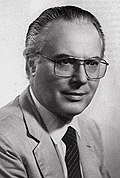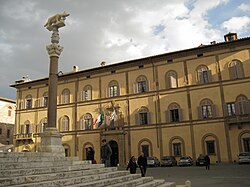 |
|---|
|
The politics of Tuscany , a region of Italy, takes place in the framework of a semi-presidential representative democracy, whereby the President of the Region is the head of government, and of a pluriform multi-party system. Legislative power is vested in the Regional Council of Tuscany, while executive power is exercised by the Regional Government led by the President, who is directly elected by the people. The current Statute, which regulates the functioning of the regional institutions, has been in force since 2005.
Contents
- Executive branch
- Current composition
- List of presidents
- Legislative branch
- Current composition 2
- Local government
- Provinces
- Municipalities
- Parties and elections
- Latest regional election
- See also
- References
- External links
Prior to the rise of Fascism, most of the deputies elected in Tuscany were part of the liberal establishment (see Historical Right, Historical Left and Liberals), which governed Italy for decades. Florence and the southern provinces of the region were anyway an early stronghold of the Italian Socialist Party (PSI). At the 1924 general election, which opened the way to the Fascist authoritarian rule, Tuscany was one of the regions where the National Fascist Party (PNF) obtained more than 70% of the vote. [1]
After World War II, Tuscany became a stronghold of the Italian Communist Party (PCI), which was especially strong in rural areas. The PCI and its successors have governed the region since 1970. The region is now a stronghold of the "centre-left coalition" led by the Democratic Party (PD), like the other regions of the so-called "Red belt". [2] [3] [4]
The centre-left coalition has governed the region since 1995, under President Eugenio Giani since 2020.























